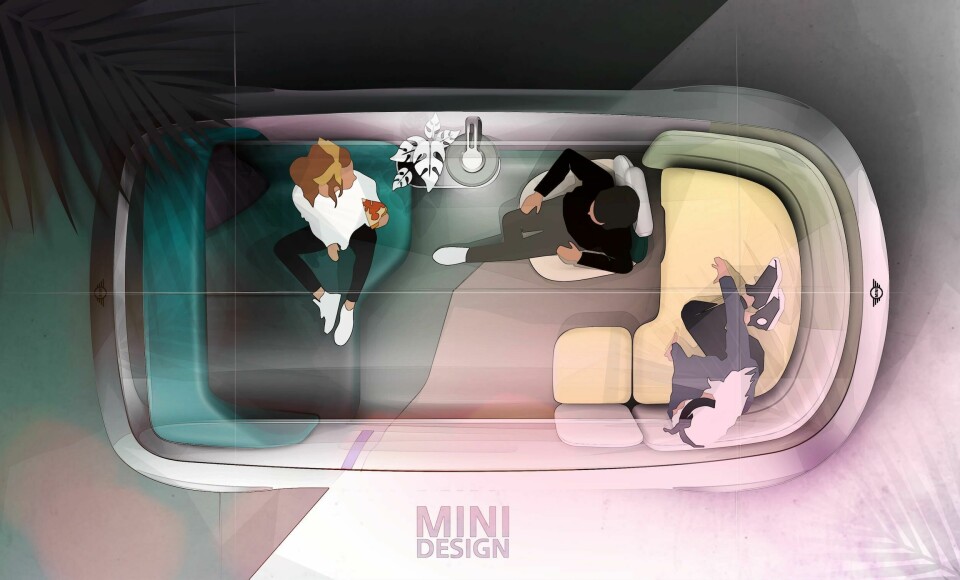
Mini showcases roomy interior with Vision Urbanaut concept
A digital showcase of the new Mini Vision Urbanaut concept shows how the company hopes to maximise interior space
Mini has unveiled its Vision Urbanaut as a digital concept vehicle. It has been designed to highlight innovative ways in which interior space can be maximised.
Instead of starting out with an exterior shape, the team at Mini designed the Vision Urbanaut from the inside out. They used floor plans and pieces of furniture to inform decisions for the inside, before moving to wooden scale models to identify the overall size of the concept. They also used augmented reality throughout the process to examine work in the digital realm.
Flexibility is key to the layout of the interior. The two front seats have the ability to rotate, the back seats can fold into a bed and ‘Cosy Corner’ with LED backlighting, and the dash can lower to become a seating corner when the car is stationary. The windscreen can also open upwards when the car is stationary, resulting in what Mini describes as a ‘Street Balcony’. Between the rear seats and dash is an open area that has a table and plant, designed to mimick a lounge space where passengers meet and engage with one another.
The dashboard is kept minimal, and when in automonous driving mode, the steering wheel and pedals retract and the driving display folds away. Light graphics on the exterior of the vehicle signal to others that the car is in autonomous mode. The wheel and pedals can be accessed again by pushing the Mini logo on the dash.
As well as flexibility and minimalism, the use of sustainable materials is a key focus. Knitted textiles are used in place of chrome and leather, while cork on the steering wheel and sections of the floor provides a natural feel.
On the outside, the Vision Urbanaut has short overhangs at the front and rear to achieve a compact appearance. The car measures 4.46m in length. The front end is characterised by the octagonal ‘grille’ area, though as there is no combustion engine present, it now acts as an ‘intelligence panel for automated driving’ instead of sucking air into the engine.
The headlamps sit under a milled aluminium structure with slotted openings, and are only visible when turned on. They can display a multi-coloured graphic that hopes to enable a new form of communication.
Finished in a matt greenish colour called ‘Zero Gravity’, the body work is kept simple and free of lines. The windows have a greenish fade from bottom to top that is supposed to create a harmonious transition from the body to the glass, without blocking out too much light.
To showcase the Vision Urbanaut, Mini hosted an online event during which head of design Oliver Heilmer provided a detailed run through of the concept. Instead of it physically driving on to a turntable, the Vision Urbanaut was only shown digitally. Mini also released a collection of artistic renderings that are particularly vibrant and illustrate the concept within different environments.
The Mini Vision Urbanaut is not dissimilar to several other concepts previously shown by other companies that target the trends of carsharing and autonomous driving, such as Canoo’s canoo, Cruise Origin, Mercedes-Benz Vision Urbanetic, and the Volkswagen Sedric.






































